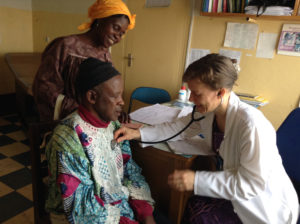The level of medical care that can be provided in resource-limited parts of the world is often amazing. The world is filled with women who delivered their babies by the light of a kerosene lamp in a village clinic and with children whose lives were saved from malaria in remote health care facilities without running water or electricity. There are, however, other illnesses where you can not escape the reality that much of the blessing of treatment we enjoy in the United States comes with a requirement for resources and technology. Cancers are often among those illnesses. Every physician providing medical care in mission lands knows the experience of seeing a patient with cancer and knowing that the outcome of treatment would be much different if chemotherapy, radiation therapy, pathology and laboratory services, and imaging studies such as CT scans were available. These are technologies which are often not available at all in resource-limited countries, or if available, are beyond the financial reach of many.

Today is World Cancer Day. The CDC tells us that cancer is the second leading cause of death worldwide and that at least one-third of the deaths from cancer are preventable. The World Health Organization notes that about 70% of all cancer deaths occur in low- and middle-income countries.
Hopefully the day will come when the outcome of a diagnosis of cancer will not depend so much on where in the world you are receiving care. Until that time, mission doctors concentrate their efforts on education to prevent cancer, treating those cancers which can be treated with available resources, and relieving the suffering of those with cancer in mission lands.
